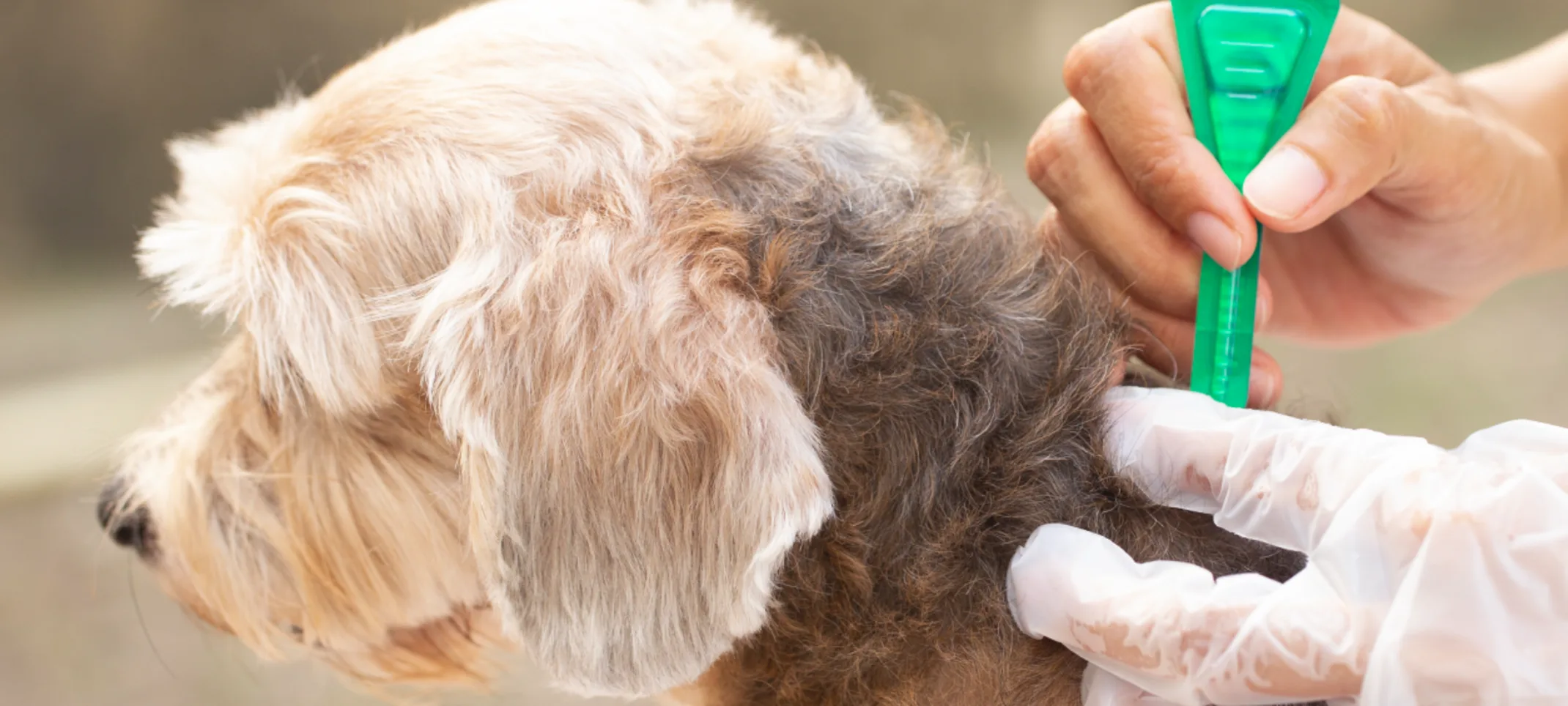I-20 Animal Medical Center
What To Do When You Find A Tick On Your Dog

What should you do when you find a tick on your dog? My grandma used to say that you can remove a tick from a dog by putting a hot match against the tick, or, apply salt, or douse it with gasoline. Please! None of those methods work. And your dog probably won’t appreciate being doused with gasoline either.
How Do You Remove a Tick?
The best way to remove a tick is to use tweezers, apply steady pressure, and pull the tick out. It is very important, that when you remove a tick, use gloves, or tweezers and do not come into contact with the tick. You should protect yourself because ticks can transmit diseases to people, such as Lyme disease.
A commonly asked question is how to remove the tick AND the tick’s head. People often find that when you remove the tick, the head gets left behind. You won’t be able to remove the tick with the head intact, unless you find and remove the tick right after it has burrowed into the skin. Ticks secrete a substance that helps the tick’s head to remain buried. This is why when you remove the tick after it has been there a while, the head remains. If the head is left behind, try applying an antibiotic ointment to help with any skin reaction that may occur. The area will eventually heal.
Ticks Can Transmit Diseases
Pets and humans are at risk from tick transmitted diseases. Diseases that can be transmitted to your dog include Lyme disease, Rocky Mountain Spotted Fever, Ehrlichiosis and Babesiosis. We are concerned about your dog getting ticks. Ticks are more than just a “yuck” factor, the diseases can be life threatening.
The biggest threat in dogs that we see in North Texas is Ehrlichiosis, and occasionally Lyme disease. When your dog is tested for heartworm disease each year, make sure that your veterinarian uses the 4X heartworm test. The 4X test will test for heartworms AND tick transmitted diseases. This is a wonderful screening test which allows us to detect dogs that have been infected but are not manifesting signs of the disease yet.
What NOT To Do
Don’t (please don’t) use your grandmother’s home remedies- they don’t work. Using a hot match, or kerosene or vaseline to smother the tick may cause the tick to inject more saliva and potentially inject disease.
Don’t SQUEEZE the tick body while removing the tick- more saliva may be injected into you or your dog.
Don’t dig at or try to remove the tick head if it is left behind. The body will reject it and the site will heal.
Products That Kill Ticks
Whether an infected tick will transmit disease to your dog is determined by how long the tick is alive and feeding on your dog. The faster the tick is removed, or killed the less likely diseases will be transmitted.
Although there are many products which kill ticks, consider using two products (FrontlineTritak or Frontline Certifect) that are specifically designed to target ticks and kill them quickly. Certifect starts killing ticks in under 6 hours and is the only product on the market that detaches ticks. It also kills fleas and is safe to use on pregnant dogs. Certifect is NOT for use in Cats. Tritak kills ticks in as little as 1 hour, also kills fleas and is safe to use in pregnant dogs. For cats, be sure to use Tritak for Cats.
